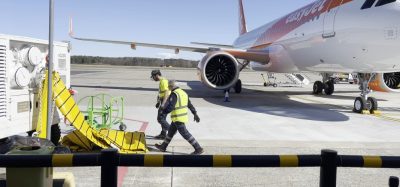Aviation industry to governments: “help us build the air traffic management system of tomorrow”
- Like
- Digg
- Del
- Tumblr
- VKontakte
- Buffer
- Love This
- Odnoklassniki
- Meneame
- Blogger
- Amazon
- Yahoo Mail
- Gmail
- AOL
- Newsvine
- HackerNews
- Evernote
- MySpace
- Mail.ru
- Viadeo
- Line
- Comments
- Yummly
- SMS
- Viber
- Telegram
- Subscribe
- Skype
- Facebook Messenger
- Kakao
- LiveJournal
- Yammer
- Edgar
- Fintel
- Mix
- Instapaper
- Copy Link
Posted: 20 November 2012 | ATAG | No comments yet
ATAG has released a new report on the future of air traffic management…


The Air Transport Action Group (ATAG) has released a new report on the future of air traffic management at the ICAO Air Navigation Conference in Montréal. Revolutionising Air Traffic Management is intended as an easy-to-understand guide on how ATM will evolve over the coming decades. The publication comes as the industry also expresses its support for ICAO’s aviation system block upgrades project which seeks to harmonise air traffic operations and technology around the world.
“The delegates meeting at ICAO in Montreal during the next two weeks truly understand the need for a revolution in the way air traffic is managed in our skies,” says ATAG Executive Director Paul Steele, “the aviation industry agrees and is fully supportive of the block upgrades project which will bring much-needed efficiencies and even greater safety to our skies and our operations.
“Aviation is traditionally a very cautious sector, with safety at the core of everything we do, but we are also a very innovative sector and over the last few decades, the technology developments on board our aircraft have often outpaced those in air traffic control systems. We are now flying jets produced in the 21st century along routes that were, in some cases, defined by the placement of radio beacons in the 1940s and 50s. And while we have many new technologies available to be deployed today, inefficiency also needs to be tackled through changes in governance and institutional arrangements.”
Revolutionising Air Traffic Management takes a look at some of the consequences of not upgrading the global system. For example, an Oxford Economics study for ATAG estimated that, by 2030, aviation could help support 82 million jobs and $6.9 trillion in GDP worldwide (up from 57 million jobs and $2.2 trillion today). But if growth in aviation were to be just one percentage lower each year, there may be around 14 million fewer jobs in 2030.
“A number of factors could impact this growth,” explains Steele, “but one of them could be congestion – either in the air or on the ground. We really want governments to understand the impact that a lack of progress can have, not just on our industry, but on the global economy as a whole.”
“Improving aviation efficiency is no longer an option, but an environmental and business necessity. As fuel now accounts for over one third of the operational costs of the world’s airlines and the aviation industry works to find additional ways to reduce its carbon emissions, air traffic management plays an important role.”
“Air traffic management and planning are not areas in which the industry can act alone. With issues of airspace sovereignty and military restricted airspace, not to mention the fact that most air navigation service providers are state-owned, governments must also play a key role in this evolution.
“This new publication is intended as a guide for those parts of government that are not so familiar with what we are doing and the culture of ATM, but who will play a vital role in helping to shape the aviation system of the future. The target audience is not civil aviation authorities or ministries of transport, who all know what ‘vectors’ and ‘waypoints’ and ‘ADS-B’ are. It is for the policymakers who don’t know the details, but need to understand the broader policy imperatives.”
The publication is available for download from the ATAG website: www.atag.org.


















